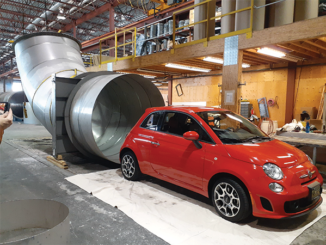
Creating incentives for the new hires is one way of ensuring you retain good employees for the long run.
By Ron Coleman
If you are having trouble getting qualified tradespeople, you are not alone; and if you are not having a problem in this area, you are one of the very few. BuildForce Canada issued a press release in March of this year regarding labour issues for the reaminder of the decade. Their report provides a summary of key points and a detailed analysis for each province. To read the full report, visit constructionforecasts.ca.
Since I am based in BC, I will highlight the BC segment of the report.
Period of Growth
British Columbia is poised to enter a very steep perod of growth. Last year was a poor year for the construction sector as projects were deferred. Not to mention this was our first material decline in a decade.
This year started off much better with several projects coming back online. There is quite a queue for building permits, with demand in all industry segments very high. As a result, BC will need to add almost 60,000 workers in the next decade. That is an expansion of 17,800 additional workers or 10 per cent increase in the workforce, which is problematic as 22 per cent of the trades are expected to retire by the end of the decade. That’s 41,000 retirees.
Underutilized Labour Force
Twenty-four per cent of BC’s construction labour force are new immigrants, while the overall percentage for Canada is 29 per cent. BC is due to receive an average of 69,000 new immigrants each year between 2021 and 2030.
The mechanical trades seem to be the best trades poised to attract new entrants, ecept for the boilermakers and gasfitters. Many segments of construction are going to have a more challenging time getting labour. The boilermaker, cvarpenter, gasfitter, glazier, heavy equipment operator, industrial electrician, insulator, lather, painter, roofer, and welder trades were identified as at risk of being undersupplied.
The non-residental sector alone is expected to require an additional 11,500 workers (up to 16 per cent) to keep pace with demands.
According to the report, only six per cent of tradespeople employed were female and only 5.7 per cent were Indigenous in 2020.
Recruitment of Workers
The main conclusions from the report are easy to define. There will be a shortage of workers, some trades will hurt more than others, and the traditional pool of English and French-speaking workers will be diminished. Additionally, with 69,000 new immigrants expected to come to BC, there is an untapped labour force that will also require housing and infrastructure to support the growing population.
This raises the question; in the next decade, where are we going to find 60,000 workers with trade qualifications?
The main source for recruiting labour will be females, Indigenous people, racialized Canadians, new immigrants, and people with disabilities. The other option is to try and fill jobs with wokers from other industries, other parts of Canada, or foreign workers. However, tapping into these markets will require reviewing policies and procedures around recruitment, retention, and multiculturalism. Recruitment and retention are going to be significant issues for most of us over the coming years. Too often, we train workers only to see them leave us for other opportunities. Some of my clients say they hire someone, and they’re a no-show on day one.
Each company needs to tailor their approach to the market they are targeting. When looking for new hires, make sure you spell out clearly what is being offered and how it meets their expectations.
Incentives to Attract New Hires
Some strategies that I would recommend to consider are offering current employees a finder’s fee of $500, if they recommend someone that gets hired and stays for a minimum of six months.
Another strategy could be providing retention bonuses to employees who stay for 12 months. Employers could develop a profit-sharing program or a share ownership program. Providing non-taxable benefits such as a cell phone allowance, cell phone charging equipment, holders, screen protectors, or earbuds could be another strategy.
Double-check with your accountant to ensure you are not creating future problems with the Canada Revenue Agency (CRA) for either you or the employee.
Talking of the CRA, there are two $500 programs that you can give to employees that involve gifts and awards. There are some restrictions on these so make sure you speak with your accountant.
Other retention options could involve financing education for new hire (offered to the employee or family), providing extra vacation days after a certain number of years, or offering extended benefits and RRP programs. Providing access to financial planners for employees could be another option.
Apprentices are urgently needed. The federal government has introduced the Apprenticeship Service program for first-year apprentices in the construction and manufacturing Red Seal trades. Emoployers can receive up to $5,000 for all first-year apprenticeships to cover salaries and training. This incentive will be doubled to $10,000 for hiring these underrepresented, including woment, racialized Canadians, and persons with disabilities. The program is expected to start this year.
In addition, there are federal and provincial payouts for all apprentices. Make sure you discuss this with your accountants. Each province has different programs. If you have had apprentices in recent years, you can refile tax returns going back three years.
Takeaway
Apart from managing labour issues, there are many other options that are available to ensure our businesses’ viability. We will cover this in part two of this article. But, in the meantime, start brainstorming with your employees. Share this article with them and ask them for their input and use their ideas. You may be amazied by their input and how it will help you grow and become an employer of choice. ■
Ron Coleman is a Vancouver-based accountant, management consultant, author, and educator specializing in the construction industry. He can be reached by email at ronald@ronaldcoleman.ca



